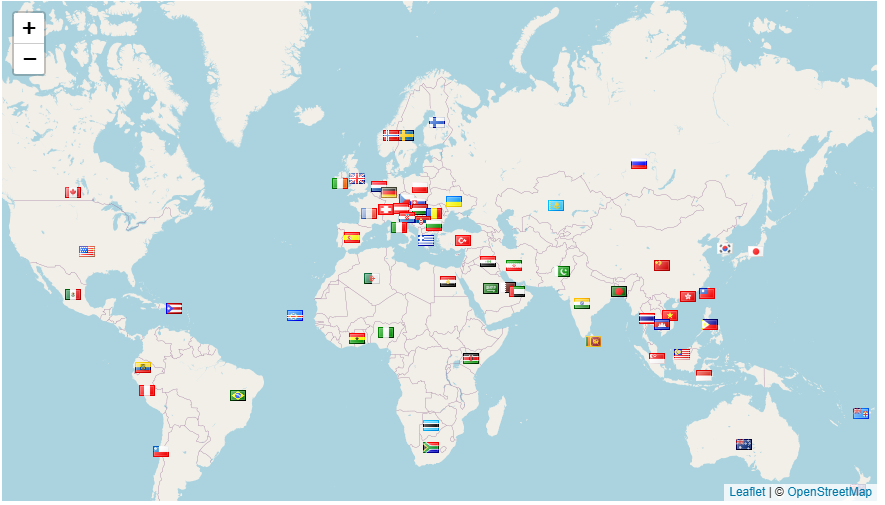An Implementation of Early Warning System for Air Condition Using IoT and Instant Messaging
DOI:
https://doi.org/10.70822/journalofevrmata.v2i02.61Keywords:
Early Warning System, air pollutants, Internet of Things, air quality, instant messagingAbstract
Air pollution poses a significant threat to human health and environmental sustainability, exacerbated by anthropogenic activities such as industrial emissions, vehicle exhaust, and fossil fuel combustion. Major pollutants include carbon monoxide (CO), nitrogen dioxide (NO2), hydrocarbons (HC), sulfur dioxide (SO2), ozone (O3), particulate matter (PM2.5), particulate matter (PM10), and etc. In this study, an Early Warning System (EWS) was developed integrating sensors, microcontroller, IEEE 802.11 network, web interface monitoring, and Instant Messaging. The system uses the CART algorithm to analyze the data, with sensors that detect CO, NO2, and HC. The evaluation of the system demonstrated its effectiveness, with recorded pollutant concentrations of 1.401 ppm for CO, 0.639 ppm for NO2, and 0.860 ppm for HC, and identified correlations between these pollutants. The EWS proved capable of providing timely alerts, ensuring continuous monitoring and management of indoor air quality, and contributing to public health and environmental protection.
References
Menteri Lingkungan Hidup Dan Kehutanan Ri, Peraturan Menteri Lingkungan Hidup Dan Kehutanan Ri Nomor P14 MENLHK SETJEN KUM1 7 2020.
Presiden Republik Indonesia, “PP No. 41 Tahun 1999 tentang Pengendalian Pencemaran Udara.”
Y. Shen et al., “Dynamic emission characteristics and control strategies of air pollutants from motor vehicles in downtown Beijing, China,” Journal of Environmental Sciences, vol. 136, pp. 637–646, 2024, doi: https://doi.org/10.1016/j.jes.2023.01.019.
O. M. Sobrinho, L. D. Martins, R. Pedruzzi, W. Vizuete, and T. T. de A. Albuquerque, “From mining to fire outbreaks: The relative impact of pollutants sources on air quality in the metropolitan area of Belo Horizonte,” Atmos Pollut Res, vol. 15, no. 6, p. 102118, 2024, doi: https://doi.org/10.1016/j.apr.2024.102118.
X. Liu, G. Li, S. Ma, J. Tian, L. Liu, and W. Zhu, “Urban road traffic scale analysis from the perspective of atmospheric environmental indicators in Tianjin, China,” Ecol Indic, vol. 82, pp. 392–398, 2017, doi: https://doi.org/10.1016/j.ecolind.2017.07.013.
G. Lou, H. Ma, T. Fan, and H. K. Chan, “Impact of the dual-credit policy on improvements in fuel economy and the production of internal combustion engine vehicles,” Resour Conserv Recycl, vol. 156, p. 104712, 2020, doi: https://doi.org/10.1016/j.resconrec.2020.104712.
L. Bai et al., “Exposure to ambient air pollution and the incidence of congestive heart failure and acute myocardial infarction: A population-based study of 5.1 million Canadian adults living in Ontario,” Environ Int, vol. 132, p. 105004, 2019, doi: https://doi.org/10.1016/j.envint.2019.105004.
C. D. Codispoti et al., “Traffic pollution is associated with early childhood aeroallergen sensitization,” Annals of Allergy, Asthma & Immunology, vol. 114, no. 2, pp. 126-133.e3, 2015, doi: https://doi.org/10.1016/j.anai.2014.10.020.
B. Esty and W. Phipatanakul, “School exposure and asthma,” Annals of Allergy, Asthma & Immunology, vol. 120, no. 5, pp. 482–487, 2018, doi: https://doi.org/10.1016/j.anai.2018.01.028.
Y. Hassoun, C. James, and D. I. Bernstein, “The Effects of Air Pollution on the Development of Atopic Disease,” Clin Rev Allergy Immunol, vol. 57, no. 3, pp. 403–414, 2019, doi: 10.1007/s12016-019-08730-3.
A. Dorey, P. Scheerlinck, H. Nguyen, and T. Albertson, “Acute and Chronic Carbon Monoxide Toxicity from Tobacco Smoking,” Mil Med, vol. 185, no. 1–2, 2020, doi: 10.1093/milmed/usz280.
A. C. Lee et al., “Annealing of Strontium Titanate Based Thermoelectric Materials by Graphite: Mechanistic Analysis by Spectroscopic and Chromatographic Techniques,” Chempluschem, vol. 85, no. 4, 2020, doi: 10.1002/cplu.202000113.
Z. Xu, Y. Li, Y. Lin, and T. Zhu, “A review of the catalysts used in the reduction of NO by CO for gas purification,” 2020. doi: 10.1007/s11356-019-07469-w.
İ. TEMİZER, Ö. CİHAN, and Ö. ÖNCÜOĞLU, “Numerical investigation of different combustion chamber on flow, combustion characteristics and exhaust emissions,” European Mechanical Science, vol. 7, no. 1, 2023, doi: 10.26701/ems.1181494.
J. Han, L. M. T. Somers, R. Cracknell, A. Joedicke, R. Wardle, and V. R. R. Mohan, “Experimental investigation of ethanol/diesel dual-fuel combustion in a heavy-duty diesel engine,” Fuel, vol. 275, 2020, doi: 10.1016/j.fuel.2020.117867.
C. K. Yeh, C. Lin, H. C. Shen, N. K. Cheruiyot, D. H. Nguyen, and C. C. Chang, “Real-time energy consumption and air pollution emission during the transpacific crossing of a container ship,” Sci Rep, vol. 12, no. 1, 2022, doi: 10.1038/s41598-022-19605-7.
N. Salman, A. H. Kemp, A. Khan, and C. J. Noakes, “Real Time Wireless Sensor Network (WSN) based Indoor Air Quality Monitoring System,” IFAC-PapersOnLine, vol. 52, no. 24, pp. 324–327, 2019, doi: https://doi.org/10.1016/j.ifacol.2019.12.430.
B. W. Dionova, M. N. Mohammed, S. Al-Zubaidi, and E. Yusuf, “Environment indoor air quality assessment using fuzzy inference system,” ICT Express, vol. 6, no. 3, pp. 185–194, 2020, doi: https://doi.org/10.1016/j.icte.2020.05.007.
E. Sharma, R. C. Deo, R. Prasad, and A. V Parisi, “A hybrid air quality early-warning framework: An hourly forecasting model with online sequential extreme learning machines and empirical mode decomposition algorithms,” Science of the Total Environment, vol. 709, 2020, doi: 10.1016/j.scitotenv.2019.135934.
Y. J. Son, Z. C. Pope, and J. Pantelic, “Perceived air quality and satisfaction during implementation of an automated indoor air quality monitoring and control system,” Build Environ, vol. 243, p. 110713, 2023, doi: https://doi.org/10.1016/j.buildenv.2023.110713.
A. L. Chiew and N. A. Buckley, “Carbon monoxide poisoning in the 21st century,” Crit Care, vol. 18, no. 2, p. 221, 2014, doi: 10.1186/cc13846.
D. J. Rupert, J. A. Poehlman, S. A. Damon, and P. N. Williams, “Risk and protective behaviours for residential carbon monoxide poisoning,” Injury Prevention, vol. 19, no. 2, p. 119, Apr. 2013, doi: 10.1136/injuryprev-2012-040339.
L. Eichhorn, M. Thudium, and B. Jüttner, “The diagnosis and treatment of carbon monoxide poisoning,” Dtsch Arztebl Int, vol. 115, no. 51–52, p. 863, 2018.
M. E. Moberg et al., “Global, regional, and national mortality due to unintentional carbon monoxide poisoning, 2000–2021: results from the Global Burden of Disease Study 2021,” Lancet Public Health, vol. 8, no. 11, pp. e839–e849, 2023, doi: https://doi.org/10.1016/S2468-2667(23)00185-8.
P. C. Y. Ng, B. Long, and A. Koyfman, “Clinical chameleons: an emergency medicine focused review of carbon monoxide poisoning,” 2018. doi: 10.1007/s11739-018-1798-x.
J. Garg et al., “Cardiovascular abnormalities in carbon monoxide poisoning,” Am J Ther, vol. 25, no. 3, 2018, doi: 10.1097/MJT.0000000000000016.
V. K. Yadav et al., “Health and Environmental Risks of Incense Smoke: Mechanistic Insights and Cumulative Evidence,” 2022. doi: 10.2147/JIR.S347489.
M. Fazlzadeh, R. Rostami, S. Hazrati, and A. Rastgu, “Concentrations of carbon monoxide in indoor and outdoor air of Ghalyun cafes,” Atmos Pollut Res, vol. 6, no. 4, pp. 550–555, 2015, doi: https://doi.org/10.5094/APR.2015.061.
T. Goto, T. Itoh, T. Akamatsu, N. Izu, and W. Shin, “CO sensing properties of Au/SnO2–Co3O4 catalysts on a micro thermoelectric gas sensor,” Sens Actuators B Chem, vol. 223, pp. 774–783, 2016, doi: https://doi.org/10.1016/j.snb.2015.09.146.
A. Paliwal, A. Sharma, M. Tomar, and V. Gupta, “Carbon monoxide (CO) optical gas sensor based on ZnO thin films,” Sens Actuators B Chem, vol. 250, pp. 679–685, 2017, doi: https://doi.org/10.1016/j.snb.2017.05.064.
K. Ravindra, R. Sokhi, and R. Van Grieken, “Atmospheric polycyclic aromatic hydrocarbons: Source attribution, emission factors and regulation,” Atmos Environ, vol. 42, no. 13, pp. 2895–2921, 2008, doi: https://doi.org/10.1016/j.atmosenv.2007.12.010.
B. Barhoumi, C. Guigue, S. Touil, B. Johnson-Restrepo, M. R. Driss, and M. Tedetti, “Hydrocarbons in the atmospheric gas phase of a coastal city in Tunisia: Levels, gas–particle partitioning, and health risk assessment,” Science of The Total Environment, vol. 879, p. 162986, 2023, doi: https://doi.org/10.1016/j.scitotenv.2023.162986.
Downloads
Published
Issue
Section
License
Copyright (c) 2024 Alfiandi Aulia Rahmadani1, Budhy Setiawan1, Yan Watequlis Syaifudin, Nobuo Funabiki, Indrazno Siradjuddin, Triana Fatmawati

This work is licensed under a Creative Commons Attribution 4.0 International License.







